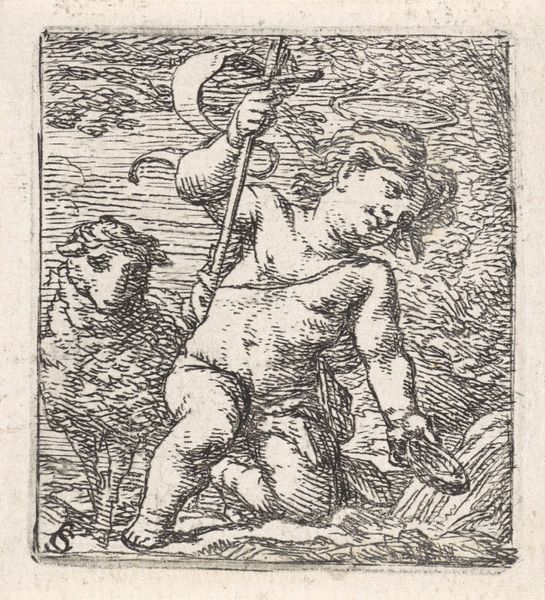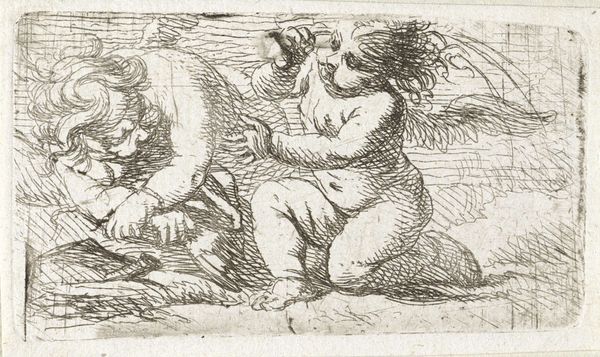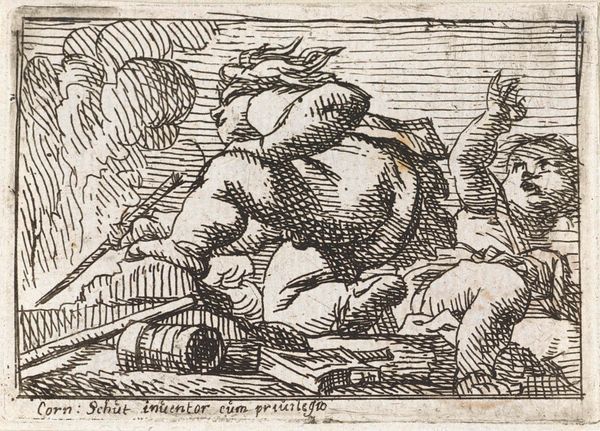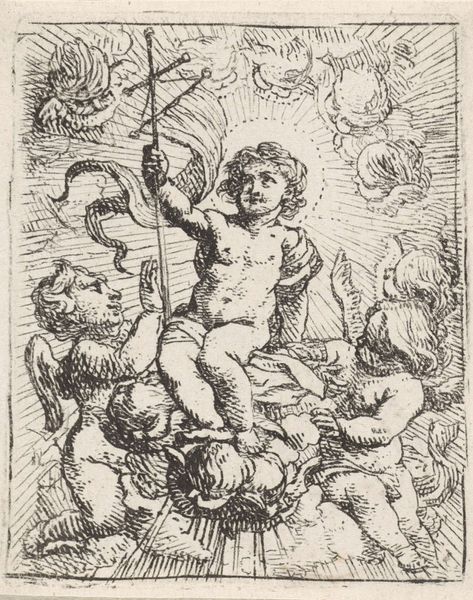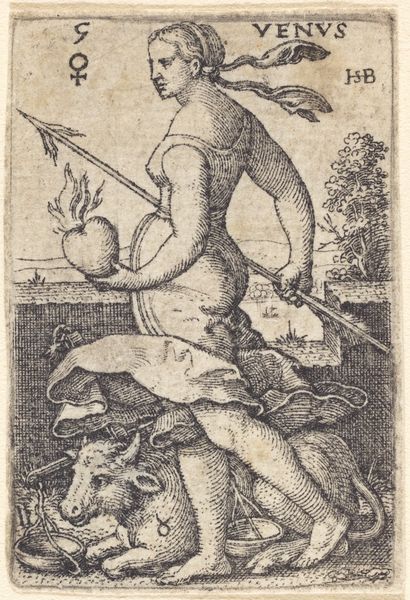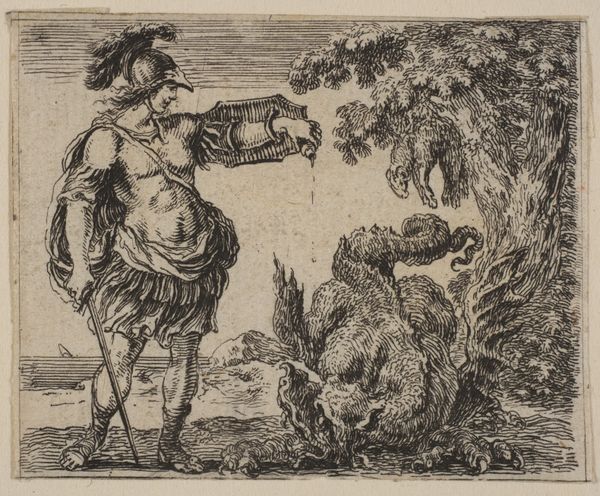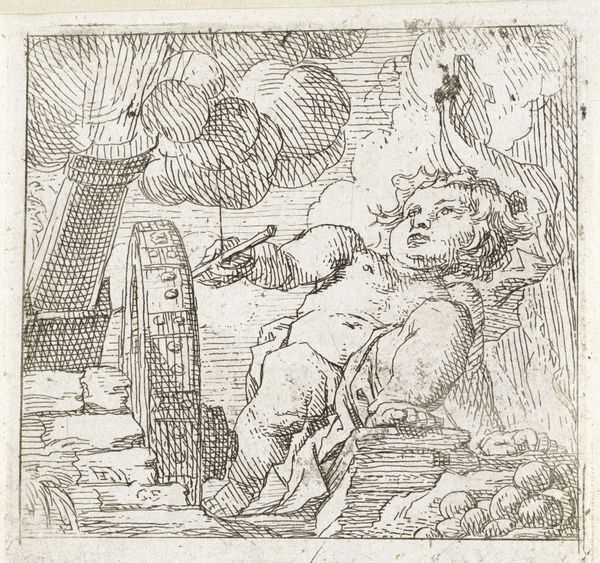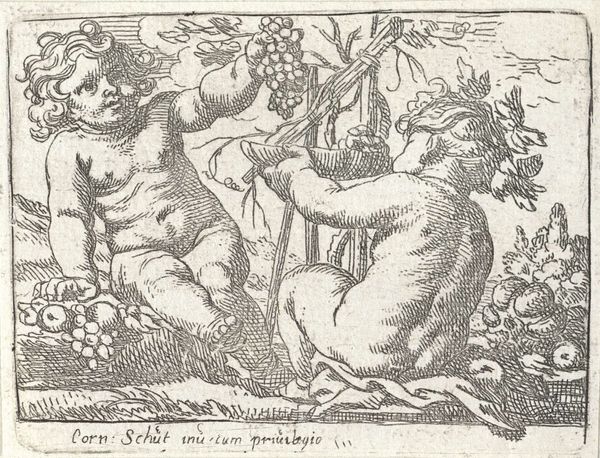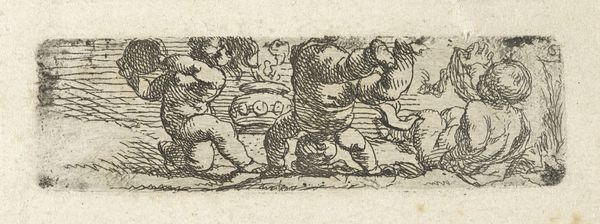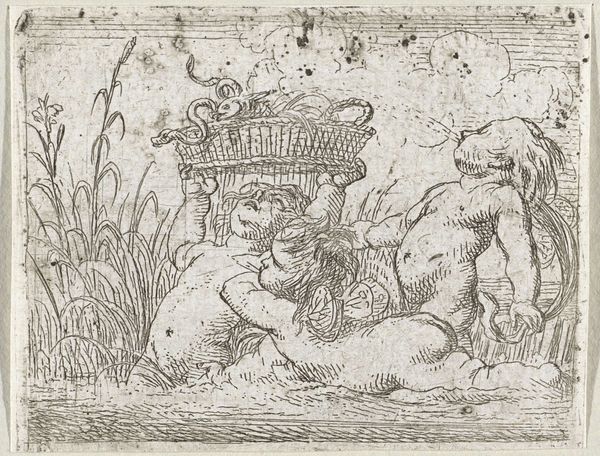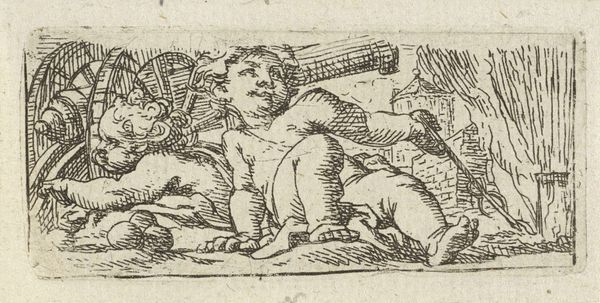
drawing, print, ink
#
drawing
#
ink drawing
#
allegory
#
baroque
#
pen drawing
# print
#
figuration
#
ink
Dimensions: height 48 mm, width 65 mm
Copyright: Rijks Museum: Open Domain
Curator: This is "Aarde," a fascinating ink drawing attributed to Cornelis Schut, dating back to between 1618 and 1655. It’s currently held here at the Rijksmuseum. Editor: Immediately, the energy strikes me. It's restless, almost feverish in its depiction. Look at the agitated linework and the bizarre creature at its center. There’s something unsettling yet compelling here. Curator: Absolutely. Schut worked within the Baroque tradition, a style known for its drama and dynamism. We can certainly see that in the figure itself and in the swirling, almost chaotic, composition. Editor: What do you make of this strange being? It feels primordial, an earth spirit perhaps. Note the cornucopia overflowing with fruits of the earth, which contrasts the dividers the figure holds in their other hand. The combination feels very meaningful. Curator: It is an allegory. "Aarde," translates to "Earth" – one of the classical elements. These dividers could allude to the scientific pursuit of understanding the Earth’s composition and measurement during the period, embodying a worldview in flux as knowledge advanced. Editor: I see a tension between raw, untamed nature and the imposition of human reason. That measuring tool – the dividers– feel symbolic of man's desire to quantify, classify, and ultimately control the natural world. It reflects a particular kind of anxiety, perhaps? Curator: It certainly speaks to the emerging scientific worldview that challenged traditional, more romantic or idealized notions of nature. This would have occurred amidst considerable societal and institutional transformation, affecting artists, patrons, and the wider public. The Baroque period, of course, was a time of religious wars, political upheaval, and a questioning of established authority. Editor: And Schut captured this perfectly. The figure is a compelling visual cipher that leaves more to explore in this tiny image. This tension makes the piece surprisingly contemporary even today. Curator: I agree. The dynamic interplay between allegory and representation grants us valuable insights into how changing societal and political landscapes found expression through art. Editor: Yes, there is definitely power to be found when symbolic language engages with human curiosity, however disorienting the overall effect is. Curator: Precisely, and examining those emotional tensions enriches our view of history. Editor: An arresting picture, however it's considered!
Comments
No comments
Be the first to comment and join the conversation on the ultimate creative platform.
